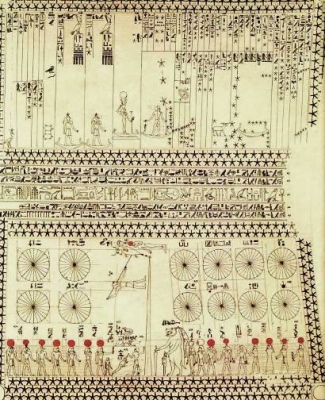
Did you know that ancient Egyptians were excellent star-gazers? It is said that they prepared the oldest map of the skies, known as the Senenmut star map, in 1534 BCE. And in this map, we can find one of the earliest records of “Her Desher,” or “the red one!” Mars is also depicted in the tomb of an Egyptian pharaoh, Seti I, and on the ceiling of Ramesseum, the memorial temple of Ramesses the Great. What is even more impressive is how the ancient astronomers of Egypt were aware of the forward-reverse-forward path tracked by Mars on the night sky (called apparent retrograde motion) as early as the 2nd millennium BCE!
Closer home, the earliest records of Mars observations can be traced back to the period before the Zhou Dynasty rule in China, sometime around 1045 BCE. By around 6th century BCE, the astronomers of Babylonia also started observing the movement of planets across the night sky, and developing calculations to predict planetary positions more accurately. They even knew how long it takes Mars to complete a full orbit. Up until this period, the Greeks, who had associated Mars with Ares, their god of war, had given no further attention to planetary observations. This was to remain so until the times of Plato and Aristotle.
Picture Credit : Google




